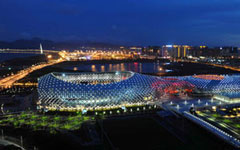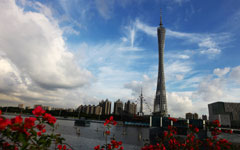BEIJING -- As China shifts its focus to a more balanced development model, gross domestic product (GDP) growth is decelerating in many parts of the country.
According to figures released by Hebei Provincial Bureau of Statistics (HPBS) on Wednesday, GDP growth of North China's Hebei province in the first half of 2014 increased by 5.8 percent. But this was dwarfed by the 8.7 percent growth rate over the same period last year.
Hebei, which borders Beijing, has been trying to cut polluting facilities such as cement, steel and glass, the major powerhouses driving its economy, as the province is partly blamed for smog that has blanketed the Chinese capital.
"In the first six months, we have seen a 1.6 percent increase of the tertiary industry and a 1.5 percent decrease of the secondary industry in terms of GDP proportion," said Yang Jingxiang, deputy head of the HPBS.
A similar situation can be found in Beijing, which reported 7.2 percent GDP growth in the first two quarters, falling short of the 7.7 percent expansion recorded from January to June in 2013.
 |
|
 |
Beijing closed the Gaojing Thermal Power Plant, a subsidiary of the state-owned China Datang Corporation, on Wednesday, replacing it with a gas-fired facility to curb pollution. Three other coal-fired power plants are expected to be closed by the end of 2016.
Other provinces and regions, including Guangxi, Guangdong and Jiangxi, all reported slower GDP expansion in the first two quarters, as China drops the growth-at-all-costs economic development model that has tainted the country's air, water and soil.
Local level authorities are encouraging primary and tertiary industries, hoping they achieve sound economic growth. Gradual changes are steering the country's economic development toward a more sustainable one.
GDP no longer sole indicator
Big polluting industries helped power China's GDP growth over the last decade. But the environment was largely compromised, as factories constantly coughed out black smoke and discharged polluted water.
Efforts to address environmental concerns have remained lacklustre as local governments supported polluting industries to generate economic growth to meet targets.
The Chinese government adopted a new appraisal system towards officials last year, stipulating that their evaluation should be based on environmental protection, the ecosystem, tackling overcapacity, service industries, among other areas, instead of purely on economic figures.
The move prompted local level governments to rethink development models and lower their GDP targets while making structural changes.
